|
FOLLOWING the Soviet revolution of October 1917, many historical and religious buildings were destroyed throughout Russia. Many of these buildings have been destroyed forever. Fortunately, most of the buildings around Red Square and the Kremlin were saved.
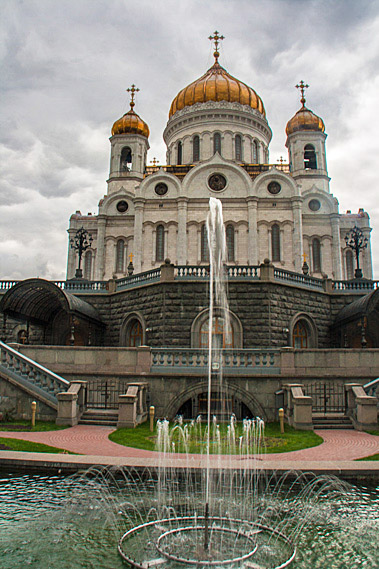 |
Cathedral |
Once across the Moskva River, we crossed the busy road at a traffic light to head towards the Cathedral of Christ the Saviour. Few churches outside this area survived the revolution. Since the fall of socialism some of these buildings have been rebuilt to bring back the pre-Soviet culture and religions.
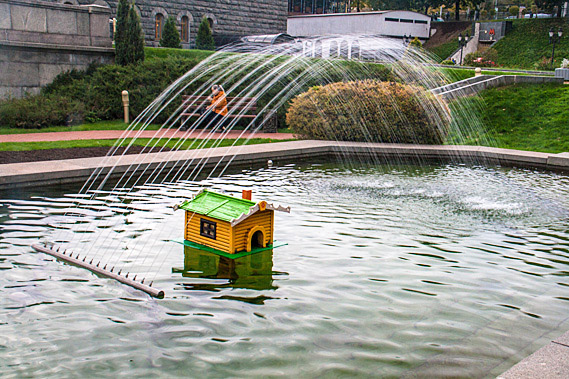 |
Fountain at base of cathedral |
It was an enormous church. At 103 metres high, it is the tallest Orthodox Church in the world. The white building towered to some golden domes. The entire structure stood on top of a very large stone platform that had once been the foundations of the original church consecrated in 1883 having taken 40 years to build. The church was built on the location of the first performance of the 1812 Egmont Overture composed by Tchaikovsky.
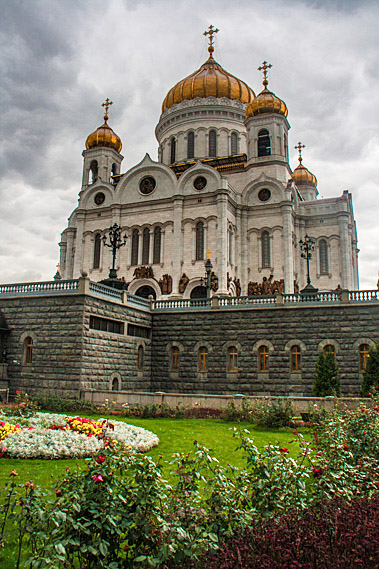 |
Cathedral |
The original church was demolished by a single explosion of dynamite in 1931 under order of Stalin. The economic department of the Soviets had advised him the dome of the church contained over 20 tonnes of gold of excellent quality. This in itself made the church too ostentatious for the Soviet Union. His vision for the site was to replace the church with a new building, the Palace of the Soviets to house the country’s legislature.
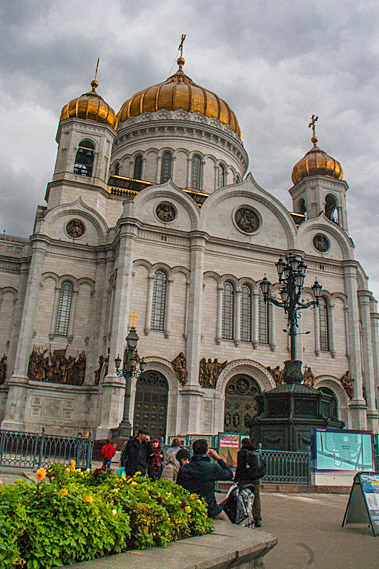 |
Cathedral |
Construction on the Palace of the Soviets started in 1937 but was delayed by a lack of funds and the flooding of the river. Construction completely stopped in 1941 during the invasion of Nazi Germany. The steel frame was dismantled the following year, but the foundation was salvaged to be converted into the Moskva Pool. At the time it was the world’s largest open-air swimming pool. Following the collapse of the Soviet Union, the new church was built faithful to the design of the original church and opened in 2000.
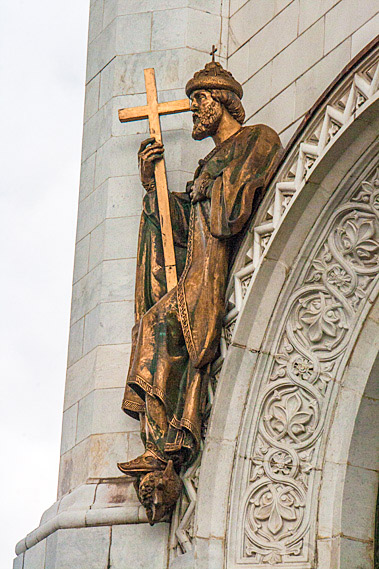 |
Statue on cathedral |
We walked around the large stone structure passing a pond with a couple of fountains and a few small structures looking a bit too small in it. At the end of the pond was the entrance to one of Moscow’s many subway stations.
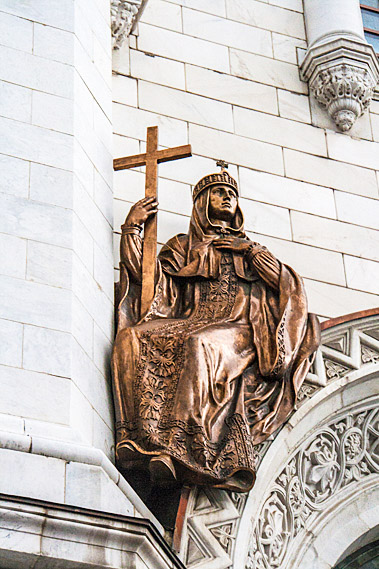 |
Statue on cathedral |
From the station entrance we headed up onto the top of the huge platform and entered the church. Sadly, no photography was allowed inside the church but most of the interesting stuff was outside anyway.
 |
Statues on cathedral |
Upon returning outside we walked around the church, looking at the life-sized bronze statues of angels and saints holding large crucifixes as if to watch over, protect and guard the church perhaps from any resurgence of socialism. Communism seems to have been long forgotten and Christianity is making a substantial comeback in Russia.
We left the area just before a large crowd of a combination of tourists and a school group arrived, so we had timed our visit very well.
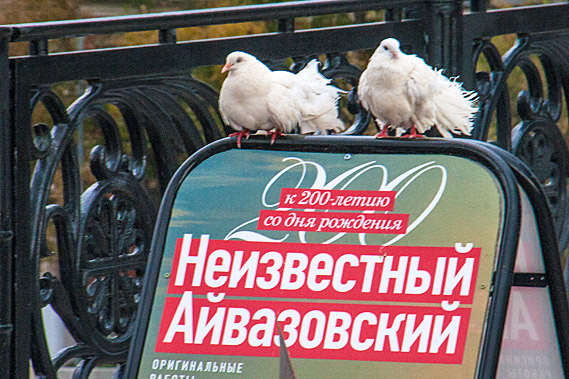 |
Doves ready for winter |
Heading down the steps of the great platform I saw a couple of large white doves with what seemed to be too many feathers. Obviously, they will need all the insulation they can get for the bleak winter ahead.
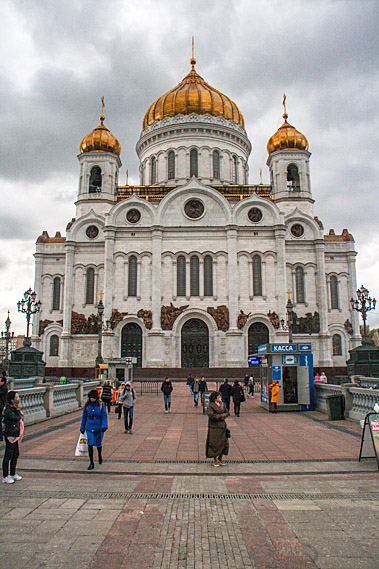 |
Cathedral |
We headed across the Moskva River across the Patriarshiy most footbridge. It had been built at the same time as the new cathedral. Crossing the bridge and looking further along the river, two features stood out. Just across the river was a five storey rust red building not high off the river at all. It would be flooded if the river were to rise only about two metres.
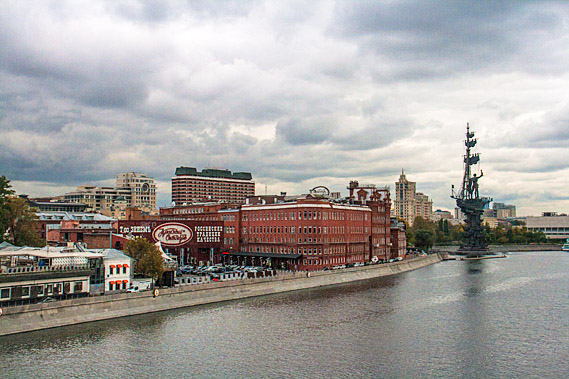 |
Red October building |
About half a kilometre downstream stood an enormous black statue of what looked like a ship with a man standing on it. The ship did look terribly out of proportion, but still made for a magnificent statue.
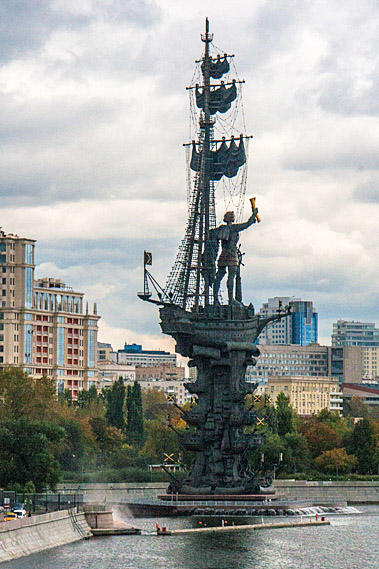 |
Ship statue |
Upon reaching the far side of the river, we followed a wide path between pale grey concrete planter boxes with marigolds in full bloom growing in them, providing brilliant splashes of orange colour in the otherwise grey city under overcast skies.
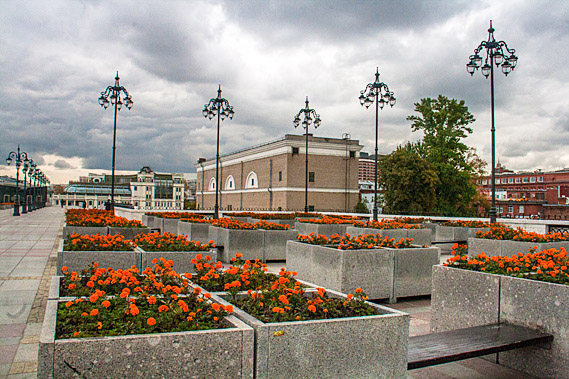 |
Flower boxes |
We followed the path leading towards the rust red building. Large signage appeared on the front of the building, though I couldn’t read the Russian. Pavel explained this was once a chocolate factory opened in 1851, called the Krasnyi Oktiabr (Red October) building. It was named after the October Revolution of 1917.
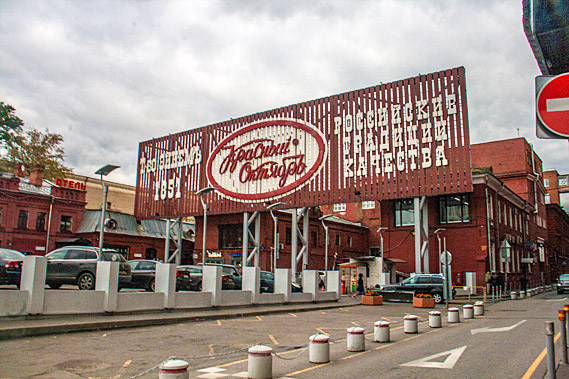 |
Red October building |
The factory, much beloved by the people, moved out to a site away from the city centre. Initially the building was going to be demolished, but it was refurbished as apartments. The conversion didn’t go quite to plan, so eventually the artists moved in. It is now quite an arty location, not expected here in Russia. The smell of chocolate has long gone to be replaced by art and good cafes.
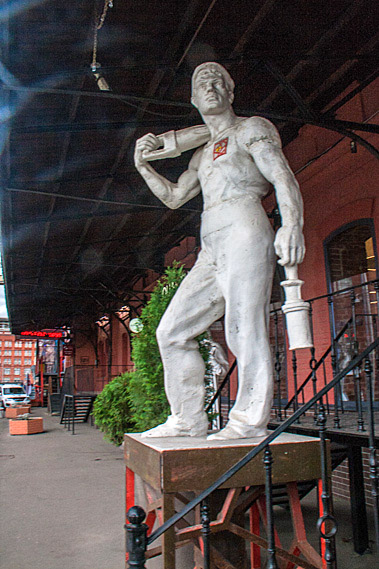 |
Statue |
Not many shops seemed to be open, or even prominent. A couple of the shops had large white statues out the front of them, perhaps advertising the businesses or maybe reminiscent on the chocolate factory that had once been here. Otherwise this was the sort of place you really need to explore to find out what lies within.
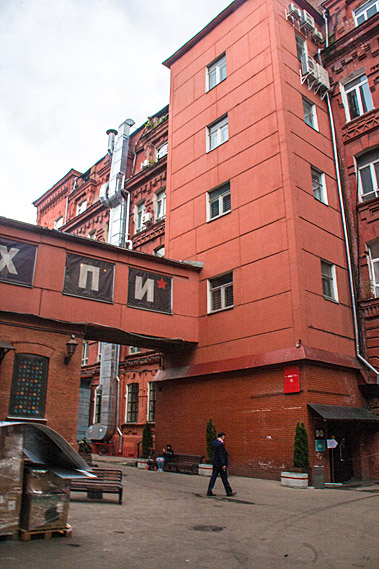 |
Red October building |
One small restaurant did stand out though. It was a lean to building made from the original dark brickwork. The shop’s name is Pita Gyros. It had a bright yellow sofa against the outer wall and just a few metres along was a brightly painted front half of a car sticking out of the wall. It was in amongst three 44 gallon drums also brightly painted.
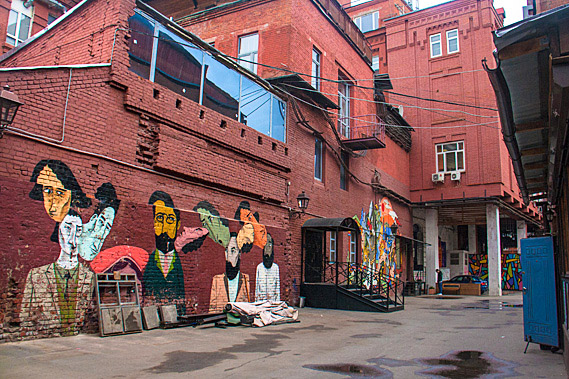 |
Red October building |
Further along the alley we followed were bright paintings of abstract people along the otherwise plain red walls of the factory. One wall had a very good black and white picture of a face painted onto the wall.
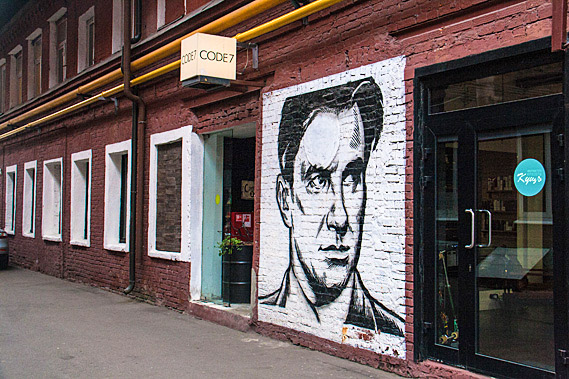 |
Red October building |
We reached the end of the alley, and headed away from the chocolate factory passing a large construction site and heading around the block until reaching the Moskva River again, crossing the channel off the small island.
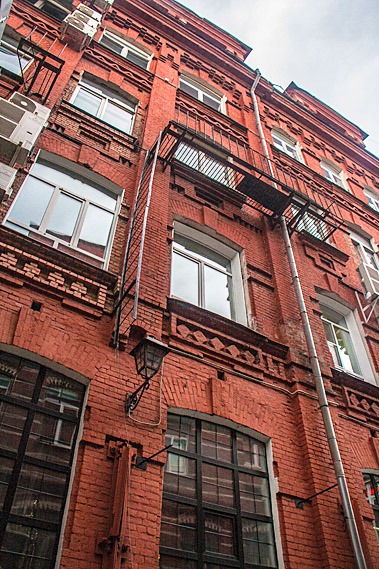 |
Red October building |
We had been fortunate in seeing two buildings with a new lease of life, reflecting Moscow’s post-Soviet culture of its past artistic and religious ways.
|
